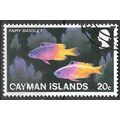Truva, Turkey (Troy) - little theatre, city walls, multiview - postcard c.1970s
- Condition : Used
- Dispatch : 2 Days
- Brand : None
- ID# : 182516820
- Quantity : 1 item
- Views : 279
- Location : United Kingdom

- Seller : justthebook (+1703)
- Barcode : None
- Start : Mon 10 Jun 2019 18:18:13 (BST)
- Close : Run Until Sold
- Remain : Run Until Sold
More Listings from This Seller view all
Seller's Description
- Postcard
- Picture / Image: Truva [Troy], Turkey - The little Theatre in Troy / City Walls - multiview
- Publisher: Kartpostal Ltd.
- Postally used: no
- Stamp: n/a
- Postmark(s): n/a
- Sent to: n/a
- Notes / condition:
Please ask if you need any other information and I will do the best I can to answer.
Image may be low res for illustrative purposes - if you need a higher definition image then please contact me and I may be able to send one. No cards have been trimmed (unless stated).
------------------------------------------------
Postage & Packing:
Postage and packing charge should be showing for your location (contact if not sure).
No additional charges for more than one postcard. You can buy as many postcards from me as you like and you will just pay the fee above once. Please wait for combined invoice. (If buying postcards withother things such as books, please contact or wait for invoice before paying).
Payment Methods:
UK - PayPal, Cheque (from UK bank) or postal order
Outside UK: PayPal ONLY (unless otherwise stated) please. NO non-UK currency checks or money orders (sorry).
NOTE: All postcards are sent in brand new stiffened envelopes which I have bought for the task. These are specially made to protect postcards and you may be able to re-use them. In addition there are other costs to sending so the above charge is not just for the stamp!
I will give a full refund if you are not fully satisfied with the postcard.
----------------------------------------------
Text from the free encyclopedia WIKIPEDIA may appear below to give a little background information (internal links may not work) :
*************
Troy (Ancient Greek: Ἴλιον, Ilion, or Ἴλιος, Ilios; and Τροία, Troia; Latin: Trōia and Īlium;[note 1] Hittite: Wilusa or Truwisa;[1][2] Turkish: Truva) was a city situated in what is known from Classical sources as Asia Minor, now northwest Anatolia in modern Turkey, located south of the southwest end of the Dardanelles/Hellespont and northwest of Mount Ida at Hisarlık. It is the setting of the Trojan War described in the Greek Epic Cycle and especially in the Iliad, one of the two epic poems attributed to Homer. Metrical evidence from the Iliad and the Odyssey seems to show that the name Ἴλιον (Ilion) formerly began with a digamma: Ϝίλιον (Wilion). This was later supported by the Hittite form Wilusa.
A new capital called Ilium was founded on the site in the reign of the Roman Emperor Augustus. It flourished until the establishment of Constantinople and declined gradually during the Byzantine era.
In 1865, English archaeologist Frank Calvert excavated trial trenches in a field he had bought from a local farmer at Hisarlık, and in 1868, Heinrich Schliemann, a wealthy German businessman and archaeologist, also began excavating in the area after a chance meeting with Calvert in Çanakkale.[3][4] These excavations revealed several cities built in succession. Schliemann was at first skeptical about the identification of Hisarlik with Troy, but was persuaded by Calvert[5] and took over Calvert's excavations on the eastern half of the Hisarlik site, which was on Calvert's property. Troy VII has been identified with the Hittite city Wilusa, the probable origin of the Greek Ἴλιον, and is generally (but not conclusively) identified with Homeric Troy.
Today, the hill at Hisarlik has given its name to a small village near the ruins, supporting the tourist trade visiting the Troia archaeological site.[6] It lies within the province of Çanakkale, some 30 km south-west of the provincial capital, also called Çanakkale. The nearest village is Tevfikiye. The map here shows the adapted Scamander estuary with Ilium a little way inland across the Homeric plain.
Troia was added to the UNESCO World Heritage list in 1998.
Ancient Greek historians variously placed the Trojan War in the 12th, 13th, or 14th centuries BC: Eratosthenes to 1184 BC, Herodotus to 1250 BC, Duris of Samos to 1334 BC. Modern archaeologists associate Homeric Troy with archaeological Troy VII.[7]
In the Iliad, the Achaeans set up their camp near the mouth of the River Scamander (presumably modern Karamenderes),[8] where they had beached their ships. The city of Troy itself stood on a hill, across the plain of Scamander, where the battles of the Trojan War took place. The site of the ancient city is some 5 km from the coast today, but the ancient mouths of Scamander, some 3,000 years ago, were about that distance inland,[9] pouring into a large bay forming a natural harbour that has since been filled with alluvial material. Recent geological findings have permitted the reconstruction of how the original Trojan coastline would have looked, and the results largely confirm the accuracy of the Homeric geography of Troy.[10]
In November 2001, the geologist John C. Kraft from the University of Delaware and the classicist John V. Luce from Trinity College, Dublin, presented the results of investigations, begun in 1977, into the geology of the region.[11] They compared the present geology with the landscapes and coastal features described in the Iliad and other classical sources, notably Strabo's Geographia, and concluded that there is a regular consistency between the location of Schliemann's Troy and other locations such as the Greek camp, the geological evidence, descriptions of the topography and accounts of the battle in the Iliad.[12][13][better source needed][14]
Besides the Iliad, there are references to Troy in the other major work attributed to Homer, the Odyssey, as well as in other ancient Greek literature (like Aeschylus' Oresteia). The Homeric legend of Troy was elaborated by the Roman poet Virgil in his Aeneid. The Greeks and Romans took for a fact the historicity of the Trojan War and the identity of Homeric Troy with the site in Anatolia. Alexander the Great, for example, visited the site in 334 BC and made sacrifices at tombs there associated with the Homeric heroes Achilles and Patroclus.
After the 1995 find of a Luwian biconvex seal at Troy VII, there has been a heated discussion over the language that was spoken in Homeric Troy. Frank Starke of the University of Tübingen recently demonstrated that the name of Priam, king of Troy at the time of the Trojan War, is connected to the Luwian compound Priimuua, which means "exceptionally courageous".[15] "The certainty is growing that Wilusa/Troy belonged to the greater Luwian-speaking community," although it is not entirely clear whether Luwian was primarily the official language or in daily colloquial use.[16]
Listing Information
| Listing Type | Gallery Listing |
| Listing ID# | 182516820 |
| Start Time | Mon 10 Jun 2019 18:18:13 (BST) |
| Close Time | Run Until Sold |
| Starting Bid | Fixed Price (no bidding) |
| Item Condition | Used |
| Bids | 0 |
| Views | 279 |
| Dispatch Time | 2 Days |
| Quantity | 1 |
| Location | United Kingdom |
| Auto Extend | No |



 for 1 item(s)
for 1 item(s)

















